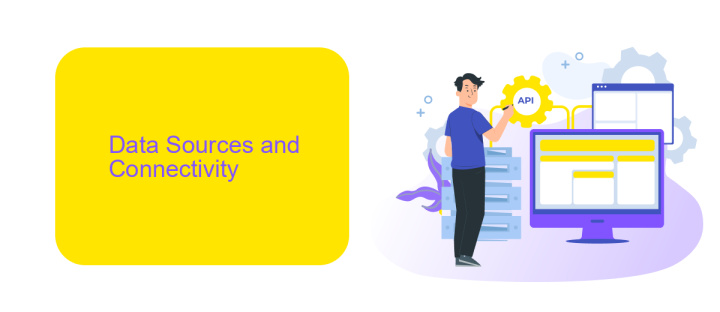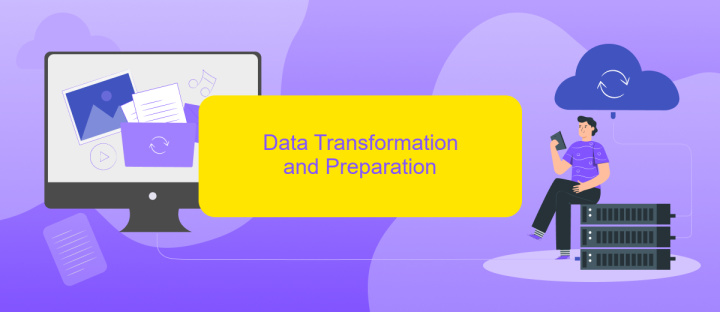Edge BI Data Integration
Edge BI Data Integration is revolutionizing the way businesses handle data by bringing analytics and processing closer to the source. This innovative approach minimizes latency, enhances real-time decision-making, and optimizes resource utilization. By seamlessly integrating edge computing with business intelligence, companies can gain deeper insights, improve operational efficiency, and stay ahead in today's competitive landscape.
Introduction
Edge BI Data Integration is transforming how businesses handle data, enabling real-time analytics and decision-making at the edge of networks. This approach reduces latency, enhances data security, and improves operational efficiency by processing data closer to its source.
- Reduces latency by processing data locally
- Enhances data security through localized data handling
- Improves operational efficiency with real-time analytics
To facilitate seamless integration of data from various sources, services like ApiX-Drive offer robust solutions. ApiX-Drive simplifies the process by providing automated data synchronization and integration, ensuring that businesses can leverage their data effectively without the need for extensive manual intervention. This makes it an invaluable tool for companies looking to enhance their edge BI capabilities.
Data Sources and Connectivity

Edge BI data integration requires a comprehensive approach to managing diverse data sources and ensuring seamless connectivity. These sources can range from IoT devices, sensors, and on-premises databases to cloud-based storage solutions and third-party applications. Effective integration involves not only capturing data from these varied sources but also transforming and normalizing it for consistent analysis. Utilizing robust APIs and middleware solutions can streamline this process, ensuring that data flows smoothly from its origin to your BI tools.
One effective way to manage these integrations is by leveraging services like ApiX-Drive. ApiX-Drive offers a user-friendly platform that simplifies the process of connecting various data sources without requiring extensive coding knowledge. It supports a wide range of applications and systems, making it easier to automate data transfers and synchronization. By using such services, organizations can achieve real-time data integration, which is crucial for making timely, data-driven decisions in an edge computing environment.
Data Transformation and Preparation

Data transformation and preparation are critical steps in the Edge BI data integration process, ensuring that raw data is converted into a usable format for analysis. This involves cleaning, structuring, and enriching the data to meet the specific requirements of the business intelligence tools being used.
- Data Cleaning: Remove inconsistencies, duplicates, and errors to ensure data quality.
- Data Structuring: Organize data into a specified format or schema for easier analysis.
- Data Enrichment: Enhance data by adding relevant information from external sources.
Tools like ApiX-Drive can facilitate these processes by automating data integration and transformation tasks. ApiX-Drive allows users to connect various data sources, enabling seamless data flow and transformation. By leveraging such tools, businesses can significantly reduce the time and effort required for data preparation, leading to more efficient and accurate business intelligence outcomes.
Data Visualization and Analysis

Data visualization and analysis are crucial components of Edge BI Data Integration, enabling businesses to make informed decisions based on real-time data. By transforming raw data into visual formats such as charts, graphs, and dashboards, organizations can quickly identify trends, patterns, and anomalies.
Effective data visualization tools facilitate the interpretation of complex datasets, making it easier for stakeholders to understand and act upon the insights derived. Integration platforms like ApiX-Drive enhance this process by seamlessly connecting various data sources and automating data flow.
- Real-time data dashboards for instant insights.
- Customizable visualizations tailored to specific business needs.
- Automated data integration for consistent and accurate reporting.
- Interactive charts and graphs for deeper data exploration.
By leveraging these tools and services, businesses can ensure that their data visualization and analysis efforts are both efficient and effective. This not only improves decision-making processes but also drives overall business performance by providing a clear and comprehensive view of operational metrics.
- Automate the work of an online store or landing
- Empower through integration
- Don't spend money on programmers and integrators
- Save time by automating routine tasks
Deployment and Governance
Deploying Edge BI Data Integration solutions requires meticulous planning and execution to ensure seamless integration and optimal performance. The deployment process involves setting up edge devices, configuring data pipelines, and establishing secure communication channels. Utilizing tools like ApiX-Drive can significantly streamline this process by automating data transfers and synchronizations between diverse systems, thereby reducing manual intervention and errors. Proper deployment ensures that data is collected, processed, and analyzed in real-time, providing actionable insights closer to the data source.
Governance plays a crucial role in maintaining the integrity and security of data within Edge BI environments. It involves establishing policies and procedures for data access, usage, and storage. Implementing robust governance frameworks helps in ensuring compliance with regulatory standards and protecting sensitive information from breaches. Regular audits and monitoring are essential to identify potential vulnerabilities and enforce security measures. By integrating governance practices with deployment strategies, organizations can achieve a balanced approach that maximizes the efficiency and reliability of their Edge BI Data Integration initiatives.
FAQ
What is Edge BI Data Integration?
Why is Edge BI Data Integration important?
How does Edge BI Data Integration differ from traditional data integration?
What are the challenges of implementing Edge BI Data Integration?
How can I automate and set up Edge BI Data Integration?
Apix-Drive is a universal tool that will quickly streamline any workflow, freeing you from routine and possible financial losses. Try ApiX-Drive in action and see how useful it is for you personally. In the meantime, when you are setting up connections between systems, think about where you are investing your free time, because now you will have much more of it.


